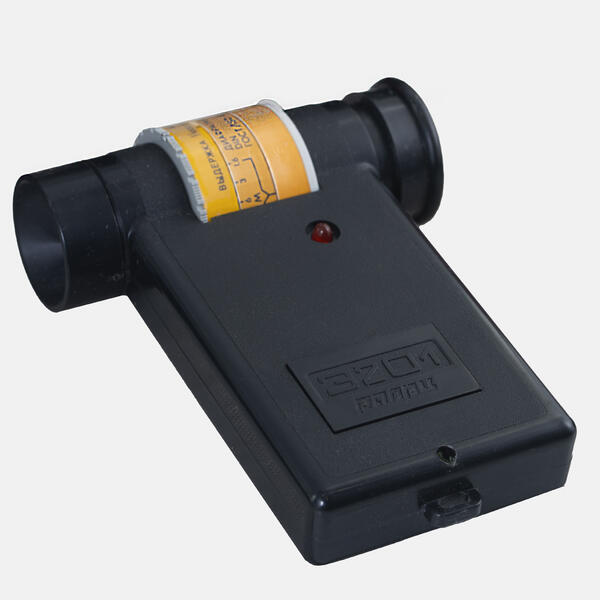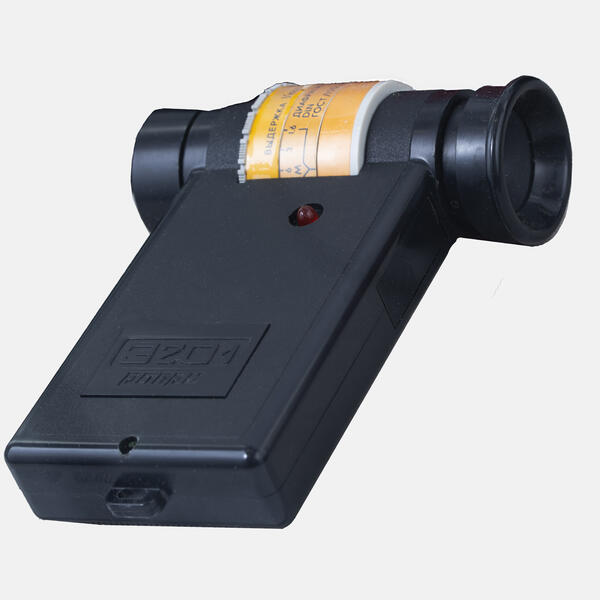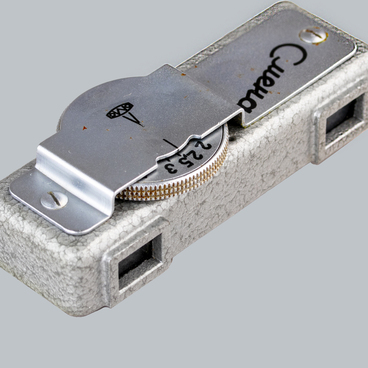A light meter is a special device for determining exposure parameters of shooting under specific conditions. Light meters are subdivided into photoelectric, optical, paper (exposure tables) and visual (such as RAPRI).
An exposure table is a reference table printed on cardboard or other material. It lists various factors affecting exposure and exposure components — scales of shutter speed and aperture. Depending on the shooting conditions, a photographer found the right positions in the table and adjusted the shooting parameters. As a rule, exposure table meters were equipped with rotating or sliding elements. The meters were mainly used when flashes were involved in the shooting process.
Visual light meters, which enabled visual comparison of the brightness of an object with that in a reference table, were very accurate. However, they are not prompt enough and so are rarely used nowadays.
The amateur spot light meter RAPRI E201 was used in photographic printing to determine the exposure and select the suitable type of photographic paper, to measure the contrast and optical density of a negative, to control the intensity and contrast of the electrical illumination of an object during a reprography session in a pavilion, as well as to control the illumination of an object during filming photography. RAPRI’s small angle of view allowed it to determine the exposure with high accuracy even from the smallest yet important details of the shooting area. The visual principle of comparing the brightness of the object with that of the light spot in the view of the light meter enabled the device to work in various lighting conditions.
The RAPRI light meter was quite simple to use: the
photographer looked through the spotting scope and turned the ring on the body
of the light meter to achieve the same brightness of the light-emitting diode
and the object in a certain visible area. At the right exposure, the
light-emitting diode became indistinguishable; when the brightness was
increased, the diode started glowing, when decreased — the diode became a dark
spot.




